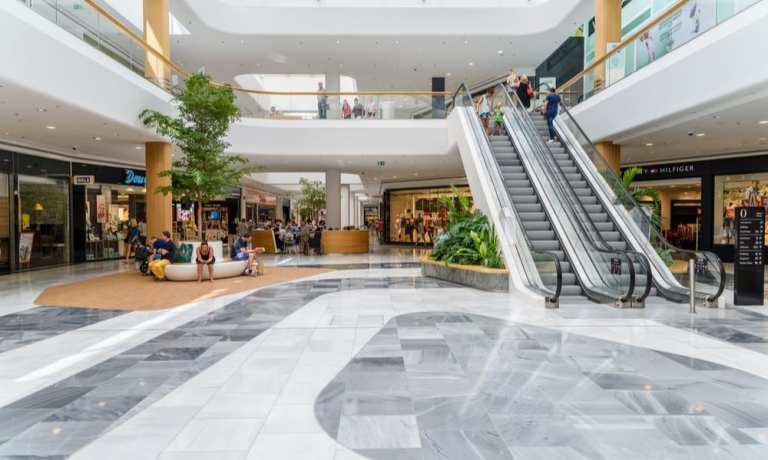They’re reopening – but they’re dead. Or they’re fading. Or they’re awaiting a renaissance. The characterization of the future of the American mall cuts across many opinions and datasets, but the fact remains that in many cases, it is a fixture of brick-and-mortar retail.
As the department stores that once profitably anchored them are now declining, malls need a reality check. They are subject to many misperceptions that could be an obstacle to their speedy and successful recovery.
The most important misperception to consider is the complete death of the mall. Under a generic lens, it might be true, because the mall as consumers once knew it may cease to exist. But under a more specific analysis, malls don’t stand up to a one-size-fits-all treatment.
There are three tiers of malls: A, B and C malls. “A” malls were successful before the crisis, and will eventually build on that success and the capital of their owners, like Simon Properties, to recover. In fact, pre-crisis, Simon had invested $1 billion per year since 2012 on recasting its top malls as destinations, building office space and hotels into the mix as anchor tenants. Pre-crisis, there was a gap between the high- and low-end malls. While vacancies at top malls have remained tight at 2.7 percent, the bottom rung of malls are struggling with an average vacancy rate of 7.9 percent as of the first three months of 2020, according to Kevin Cody, senior consultant at CoStar Portfolio.
Even the most profitable malls, however, will need to make rapid and substantial changes. For example, retail and restaurant technology company GRUBRR has designed new kiosks that are capable of recycling cash both for consumers and for management that need to reconcile payments at the end of the day. It reduces the number of consumer interactions and moves to mitigate the amount of germs transferred by trading paper money.
“The first thing malls have to do is get the perception right,” noted GRUBRR CEO Sam Zietz. “Before, when you went to a mall or a restaurant, you paid attention to the food quality or the product quality, along with the price. Now, you have the new factor of safety. It’s a bucket that nobody considered two months ago. Is it safe to go into the mall? I think retailers and restaurants need to do a good job of publicizing the steps they’re taking to make sure that their establishments are clean and safe.”
Advertisement: Scroll to Continue
The second misperception is that the death of the department store, which is a real and accelerating dynamic, will hasten the death of the mall. The thinking is that anchor tenants, made up largely of department stores, will fold and then leave malls without a major draw. JCPenney, Neiman Marcus, Nordstrom and Macy’s have been in various stages of financial distress before the crisis, and that has only deepened. Macy’s reopened nearly 70 stores Monday, with many focusing only on curbside pickup. CEO Jeff Gennette said he expects less than 20 percent of the business to come back at first.
To the contrary, the anchor tenancy issue may be the best thing to happen for many malls. It will force them to consider anchor tenants that attract consumers to entertainment and experiences rather than straight shopping. As an example, Simon and Allied Esports have started a project at the Mall of Georgia outside of Atlanta that will result in a two-level, 13,000-square-foot dedicated esports facility. According to Footwear News, it will feature gaming tournaments, PCs and consoles for daily use and food.
“The ultimate goal of any of these entertainment venues that we’re seeing pop up in malls now is to bring more traffic, to bring younger traffic than they might have been getting,” said NPD Group Senior Sports Industry Adviser Matt Powell. “It’s not unlike putting in a Dave & Busters or a chain like we have in the Northeast called Round 1 that has an arcade and pool tables. The idea is to make the mall more of an entertainment destination than just a commerce one.”
And the third misperception might be laying the overall foot traffic problems at some malls completely at the feet of the pandemic. There has always been a strong argument that eCommerce has hurt mall traffic. With online shopping gaining even more popularity with the pandemic, we can expect it to take even more business from malls.
According to the PYMNTS COVID-19 study, some 66 percent of responding consumers said that a trip to the grocery store sounded too risky, and 64 percent said they now feel uneasy in all retail stores. And given that 53 percent of the consumers we polled believe the pandemic will last over seven months – up from estimates of closer to five months just two weeks earlier – it seems Americans don’t trust the situation outside, which means the digital shift will drive on for now.
“The crisis has forced omnichannel retailing to grow even faster,” noted McMaster University retailing professor Manish Kacker. “I would expect the consumer will not want to spend as much time in the mall as they would have done in the past. All they want is more functionality. Some of the malls have adapted to that, in terms of emphasizing incorporating new entertainment elements into the mall, which do not have an online substitute. A lot of it focus[es] on creating customer experiences and giving customers entertainment options. But the challenge they will face now is that those sorts of experiential options are … also potentially the most risky.”




